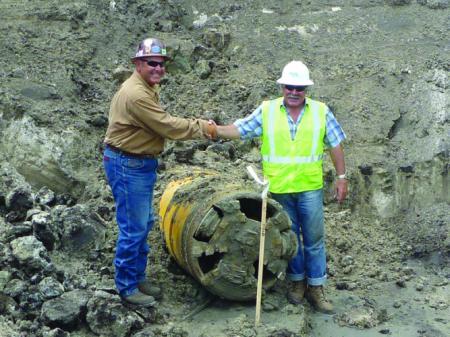
Some costs are related to the measured depth, such as the cost of casing string, volumes of cement slurries, mud additives, time to log, run casing and wait for cement hardening. are predictable and have negotiable prices. Intervals of the planned well are divided by the expected rate of penetration (ROP) by depth, generating the Drilling Hours seen in a Bit Program ( Table 1).Įxample of a proposed Bit Program for an onshore well in Mexico.įixed costs: expenditure with inventory of replacement parts, wellhead elements etc. San Luis Obispo, CA, USA: CENGAGE Learning,2010.) is different from a statistical set, since only some good drilling performances are considered in the former approach, uncertainty is brought to the costs of the future wells. Probability & statistics for engineering and the sciences. As the dataset used in a conventional analysis ( Devore, 2010 DEVORE, J. A handful of good runs are elected as results to be repeated or improved.

Traditionally, the poor bit performances are discharged, understood as being the result of bad practices that shall not be repeated. Dallas, Texas, USA: 1986, December 02.), estimating future performances of the drilling operations based on existing information and personal knowledge. A technique for accurate bit programming and drilling performance optimization. Hyderabad, India: 2010.) and operational data from offset wells ( Simmons, 1986 SIMMONS, E. Estimation of pore pressure from well logs: a theoretical analysis and case study from an Offshore Basin, North Sea. A project engineer analyzes geological information ( Bera, 2010 BERA, P.

The preparation of a drilling program is performed by experienced people, being desirable knowledge about the area of the upcoming wells. New Orleans, USA, 1992.), needing to be replaced. In: IADC/SPE DRILLING CONFERENCE, IADC/SPE 23940, pp. Development of a New IADC fixed cutter drill bit classification system.
#Rem directional drilling code#
Unfortunately, a most desirable Increase in Cost per Meter IADC code was not included in the IADC 1992 reviews to report that a bit had become economically inefficient ( Brandon, B.D. 801-818.), inclination of the well, size of jet nozzles, drilling parameters and some mud properties. Louisiana, USA: Society of Petroleum Engineers, 1992. The IADC Roller Bit Classification System. Additional space is included for the eight IADC codes to report the bit wear and remarks ( McGehee, D.Y.
#Rem directional drilling serial#
Each line contains the unique information that specifies each bit: serial number, running sequence, pullout date and depth, bit type and diameter, length drilled, rig hours and rate of penetration. Its heading includes name of field and well, spud-in date, operator and relevant rig information.

The operational information of the wells is registered in a Bit Record. Some wells are drilled with the casing itself replacing the conventional drill string, disclosed as economic by saving time circulating, running casing and reducing non-productive time (Patel, D. Drilling will continue until the production zones are reached, when they are abandoned or completed to start producing. At the end of a section, the bit connected to the bottom end of the drill string is pulled out from the hole, being a casing string run and cemented.

Geosciences cost per meter least squares Amorim curveĭrilling bits are used until the moment they wear out and become ineffective, being pulled out of the well and replaced by a new one. The solution presented supports a more precise planning of costs, the improvement of technical limits and the development of different technologies in drilling operations in future wells. An expressive database, containing information from an onshore field in Brazil, yields a case study to demonstrate the benefits of this approach for the development of new drilling projects. A reliable project can reduce unexpected expenditures in a long-term campaign and shorten the learning time, resulting in improved cost prediction and a better-fitted calendar. The statistical approach incorporates uncertainties of the process, reducing the relevance of personal decisions and supporting the staff with more realistic cost estimations. This article reviews and discusses a published statistical methodology for planning upcoming oil wells. Conventional well planning is based on the personal experience of project engineers, which use information from offset wells to estimate the performances in future wells. Drilling operations must be preceded by adequate planning, fulfilling the path to produce hydrocarbons at low and competitive costs.


 0 kommentar(er)
0 kommentar(er)
